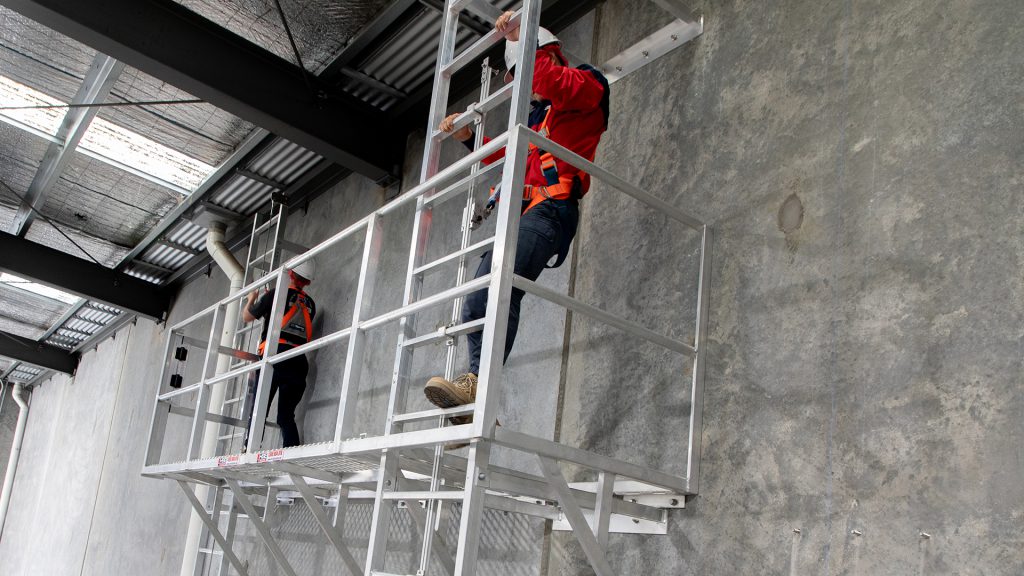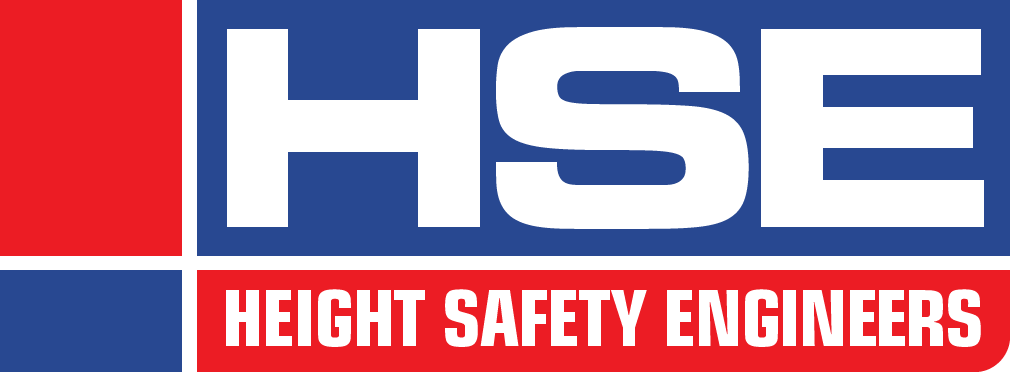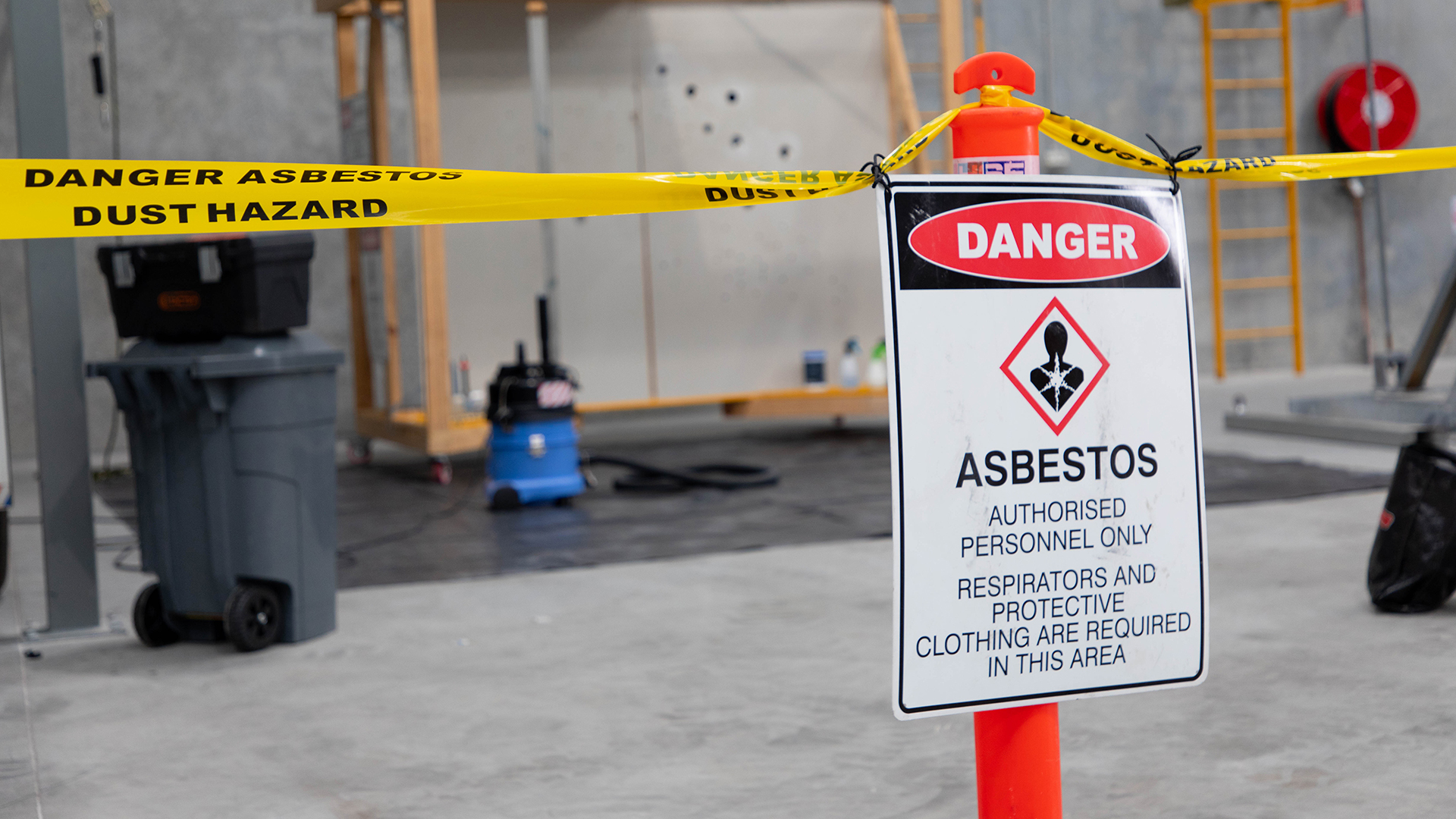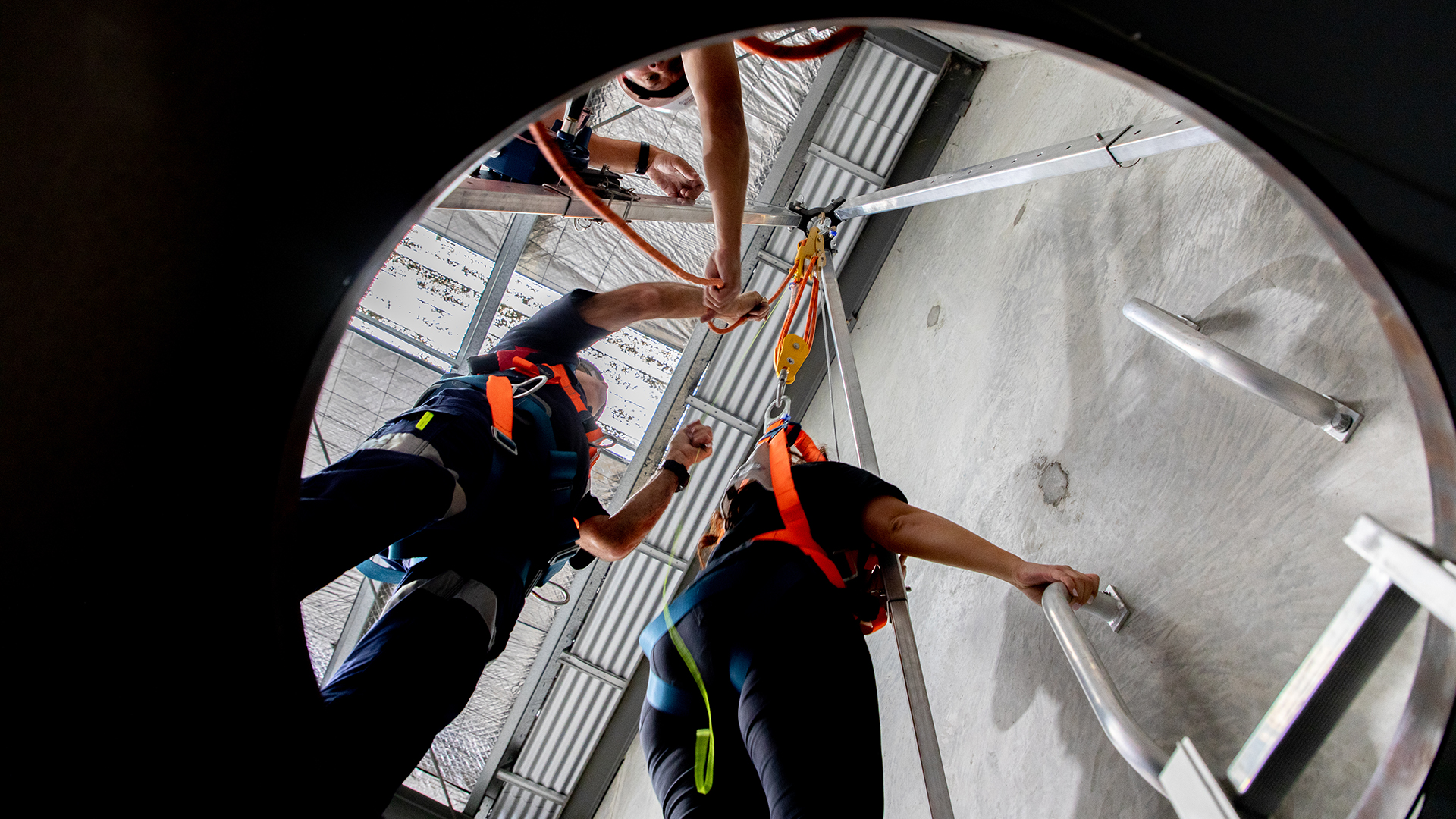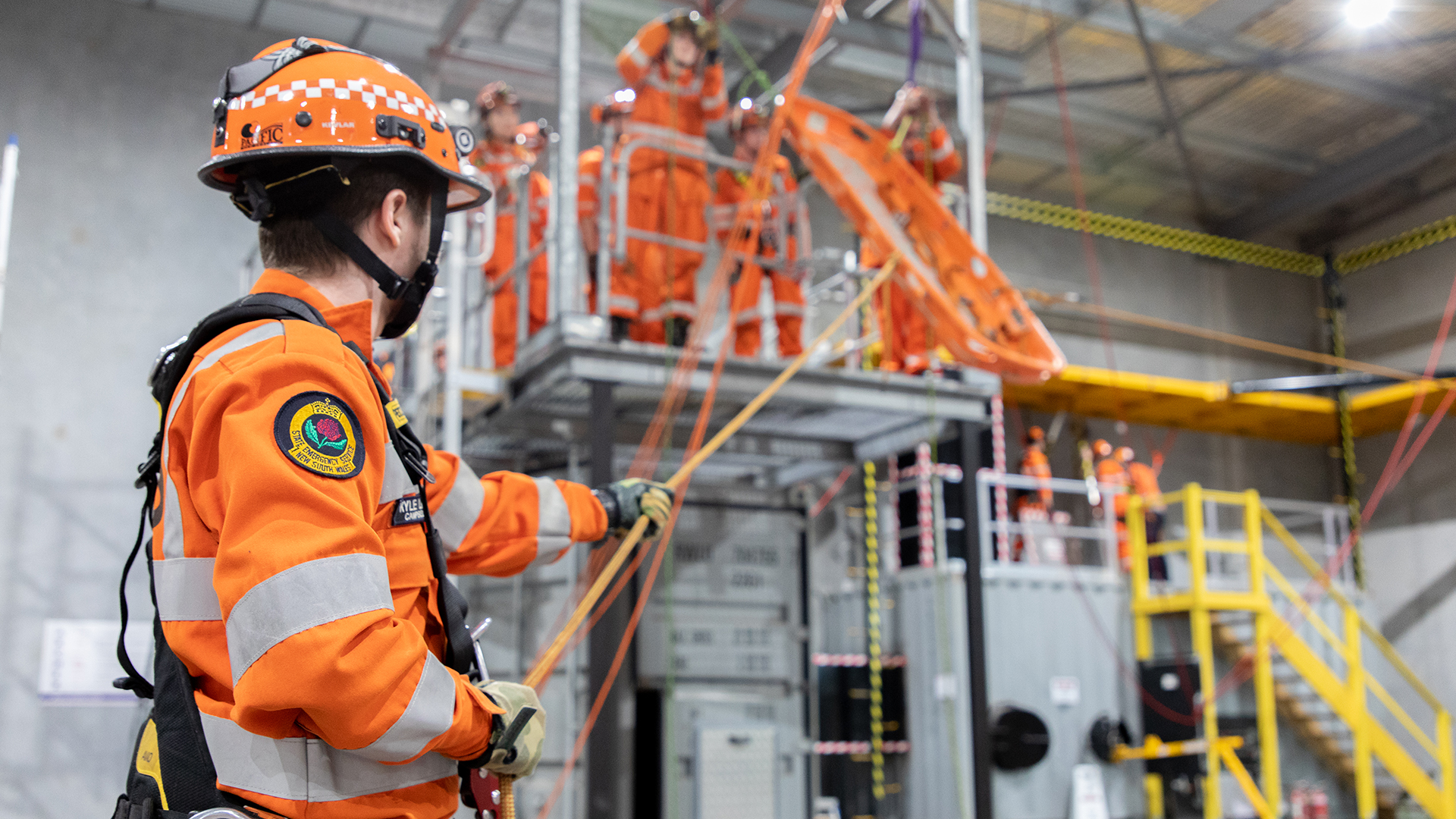RIIWHS204E Work safely at heights
This one-day nationally recognised height safety course will keep your employees safe and open up new opportunities for your business.

It’s an unfortunate fact that falls in the workplace do occur and present a major risk of serious injury and even death.
But that doesn’t mean that this situation is acceptable.
This height safety course is designed to educate workers on how to effectively eliminate and control the risks associated with workplace falls. This nationally accredited course can be undertaken by persons who are required to perform any work at heights activities where there is a risk of injury and therefore a requirement to eliminate this risk or utilise personal fall protection systems or equipment.
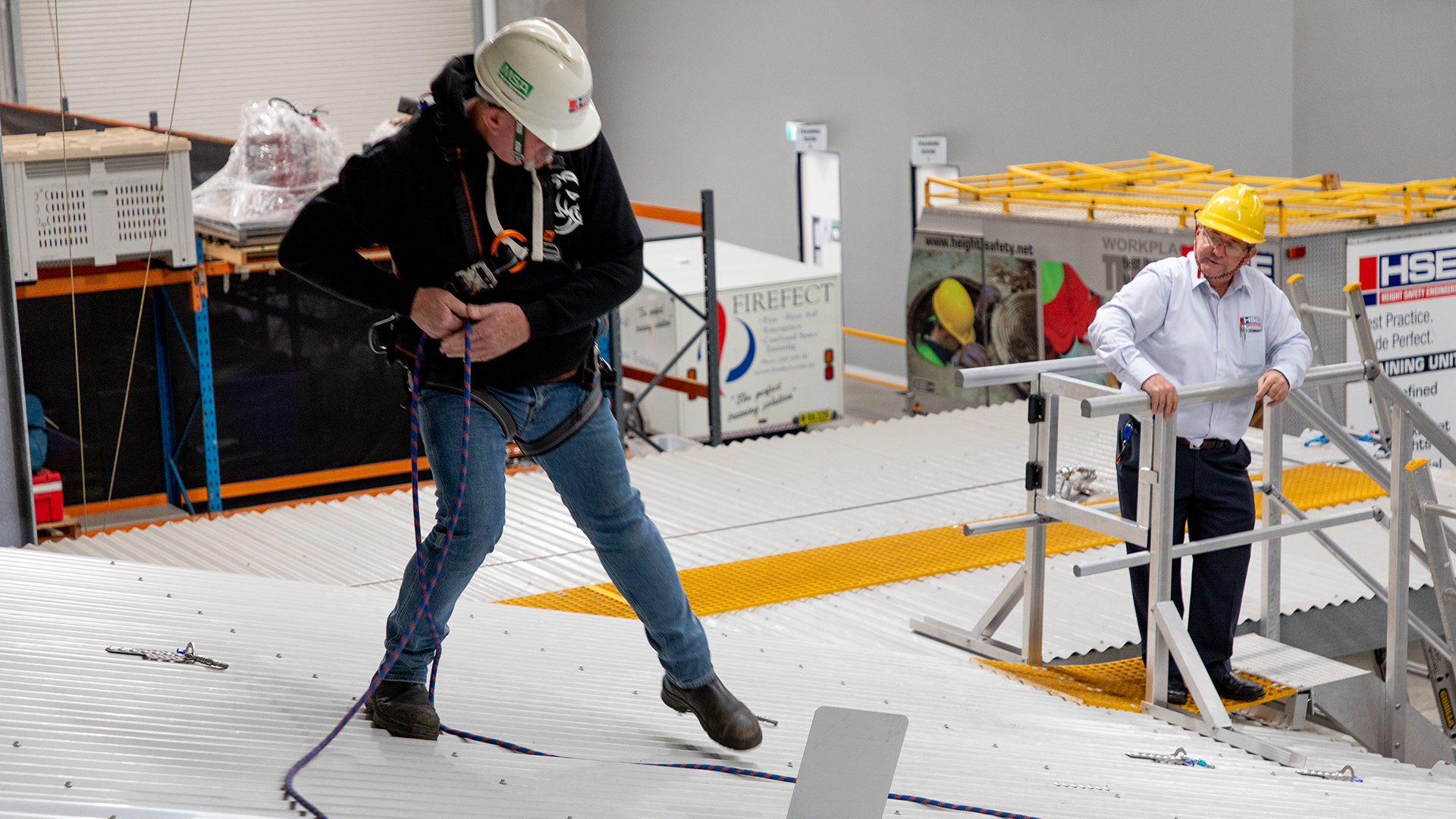
About this course
The aim of this course is to provide students with the comprehensive understanding of how to correctly use fall protection equipment in a range of environments. Following training students will be able to identify the hazards of work at height, understand key legislation, and the various categories of personal fall prevention and protection equipment including their characteristics and limitations. Students will also be required to carry out pre and post-use inspections of all equipment.
Duration: 1 day (8 hours)
Student/trainer ratio: 10:1
Course objectives and content
- Understanding of height safety legislation and standards
- How to perform risk assessments and control measures
- How to recognise suspension trauma
- Pre and post use inspection of all personal fall arrest equipment
- How to identify and correct fit a fall arrest harness
- Demonstrate fall restraint, work positioning and fall arrest techniques
- Safe use of tools and materials
- Loads on roof surfaces
- Installing roof safety systems
- Anchor point selection and inspection
- Correct rigging of anchorage slings
- Use of self-retracting lifelines
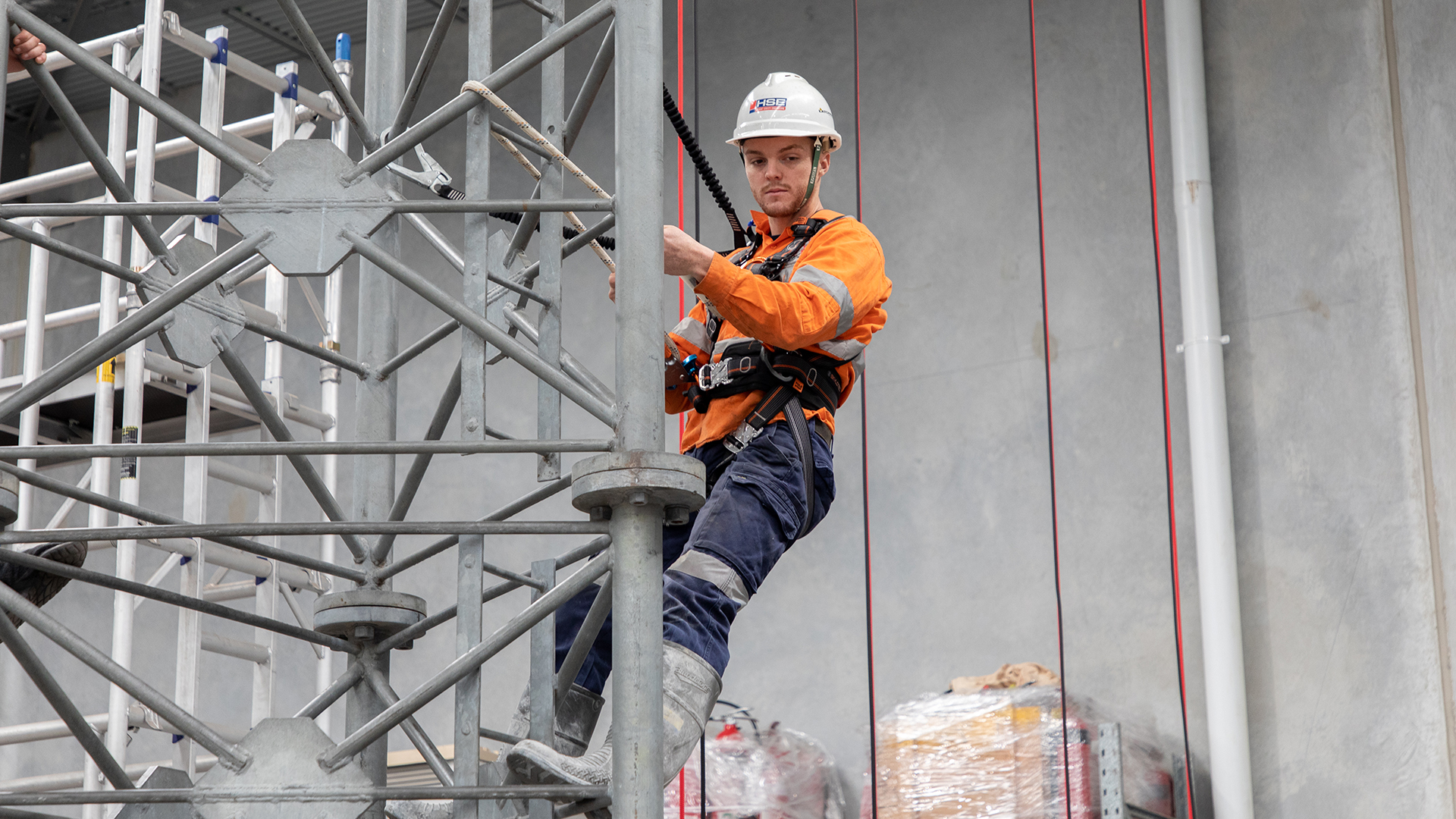
Qualifications for successful participants
Statement of attainment in:
RIIWHS204E Work safely at heights
RIIWHS204E Work safely at heights FAQs
Apart from being safer in their jobs, your employees will be able to perform a wider variety of jobs, and will actually be more productive.
As a PCBU, we understand that you want to see a real ROI if you’re going to be paying for your team to complete this course. We absolutely guarantee that your staff are going to know more about working safely at heights when they leave our course than when they arrived. They are going to be safer than ever before. Sure, they may already know a fair bit about what to do when working at heights. But they often don’t know the why behind certain procedures. History has shown that when an operator knows and understands the ‘why’ they are much less likely to take that fatal shortcut.
Once your employees know how to use all the required safety equipment and how to use it properly, they will actually work faster and more efficiently. It might take a bit longer to set up and pack down every day, but once an employee is confident in their rig, they can focus on the job and get more done.
As a PCBU, you are responsible by law to ensure that you keep your team safe at all times. If your employees don’t know if they are doing things right or wrong when they are working at heights – how are you going to know whether they are following the rules? If you can’t recognise when someone is carrying out their work in an incompetent manner, then quite frankly, you won’t be in a position to fulfil your legal obligation of ensuring a safe place of work and/or safe systems of work are both being provided and properly used.
If you’re a PCBU, we encourage you to complete our training course as well as your team members. That way, you can instruct your team when needed and help to prevent accidents occurring on your watch.
